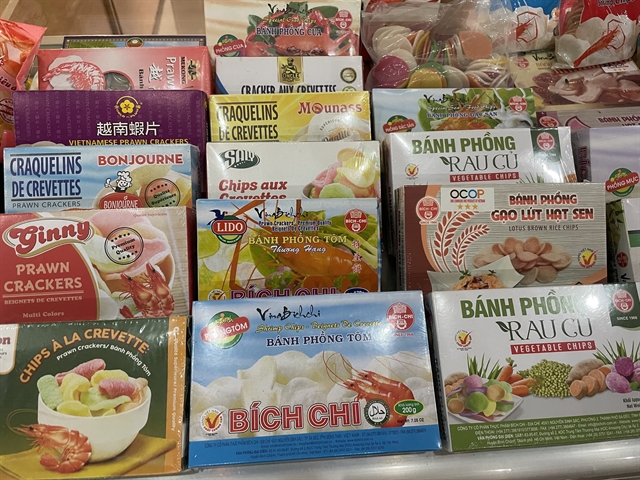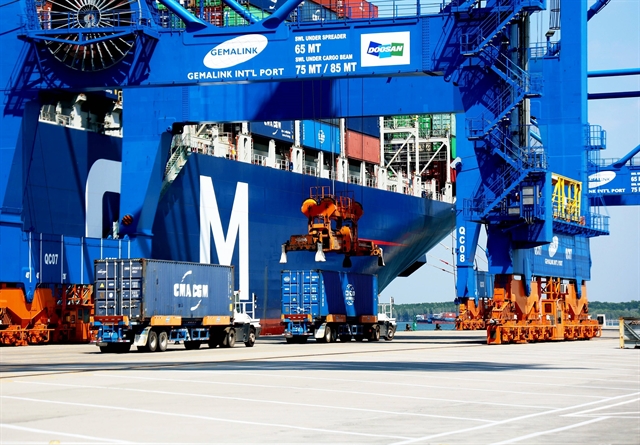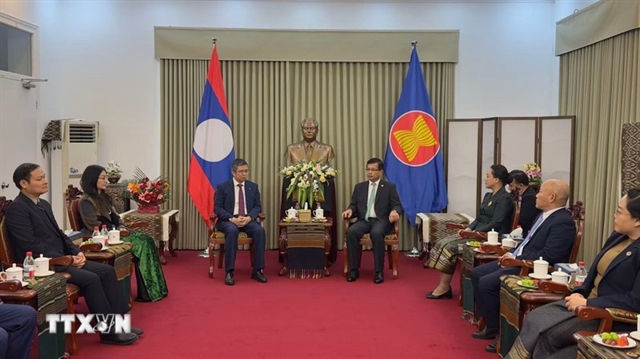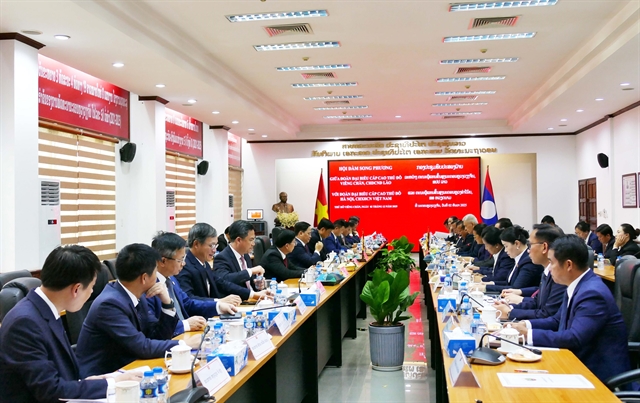 Economy
Economy
.jpg)
 |
| Export goods containers at Cái Mép-Thị Vải Port. — VNA/VNS Photo |
HÀ NỘI — Promising developments are being made in the ongoing tariff negotiations between Việt Nam and the US, despite persistent trade challenges.
That's according to Đỗ Ngọc Hưng, Trade Counsellor to the US, speaking at a conference for Việt Nam trade offices abroad held by the Ministry of Industry and Trade on April 28.
The conference underscored that while global tariff tensions are creating hurdles, they also present opportunities for Việt Nam to restructure its trade strategies, boost innovation and expand its global footprint.
Strengthened international cooperation, improved domestic competitiveness and agile policy support remain key to navigating this shifting landscape.
Speaking at this event, Hưng acknowledged existing tariff pressures on Việt Nam-US trade.
However, he emphasised that optimism remains high among major US retailers, including Walmart, Target, Costco and Home Depot. These corporations have expressed confidence in a resolution, supporting the removal of reciprocal tariffs between the two nations.
Hưng said these US retailers are planning to take part in the 'Việt Nam International Sourcing & HCM City Export Forum 2025' this September. The event aims to strengthen global supply chain connections and is jointly organised by the Ministry of Industry and Trade.
Hưng also urged Việt Nam to deepen strategic cooperation with the US across sectors such as trade, investment, energy and AI.
He recommended leveraging free trade agreements (FTAs), particularly next-generation FTAs, to diversify export markets and reduce overreliance on a single trading partner. Promoting domestic demand and supporting local consumption were also identified as critical steps for sustaining economic growth.
Hưng stressed the importance of improving domestic competitiveness by investing in supporting industries, upgrading technology and encouraging innovation. Streamlining business regulations and upgrading infrastructure will help reduce production costs and improve product quality.
Additionally, he called on Vietnamese businesses to diversify supply chains, reduce dependence on imported raw materials and increase export goods with higher intellectual property content. This approach would bolster the country's economic resilience against global shocks.
Touching on trade defence, Hưng warned of increased protective measures by countries affected by tariffs, which could intensify competition in global markets.
He emphasised the need for companies to cooperate fully with US authorities during trade litigation to safeguard national business interests.
Looking ahead, Hưng revealed that Việt Nam’s Minister of Finance will lead a business delegation to the SelectUSA Investment Summit in May, underlining the country’s commitment to fostering sustainable economic cooperation with the US.
Also speaking at the conference, Trần Thu Quỳnh, Trade Counsellor to Canada, confirmed continued growth in Việt Nam’s exports.
She said that key products are performing well, with overall export turnover to the region expected to match or exceed 2024 figures, possibly reaching US$10 billion by the end of 2025.
Quỳnh suggested that ongoing tariff challenges could serve as a catalyst for broader structural changes, such as shifting supply chains and developing a new CPTPP-aligned logistics ecosystem.
She recommended better coordination among agencies to support businesses in adapting to evolving trade landscapes.
The Việt Nam Trade Office in Canada is currently working to ease market entry for Vietnamese products by advocating for simplified rules of origin and pushing for access to Canada’s processed meat, egg and dairy markets.
In Australia, Nguyễn Thu Hương from the Việt Nam Trade Office reported a 13.2 per cent increase in exports in the first quarter of 2025, totaling nearly $1.6 billion.
She credited favourable FTAs such as the CPTPP, AANZFTA, and RCEP, as well as a strong Vietnamese diaspora in Australia, for this positive momentum.
However, she cautioned that weakening consumer demand, inflation, and a depreciating Australian dollar pose risks. Vietnamese goods face stiff competition from Chinese, Thai, and American products, especially if Australia reduces tariffs on US imports.
Meanwhile, Trương Văn Cẩm, vice chairman and general secretary of the Việt Nam Textile and Apparel Association, warned that if a resolution isn’t reached, the sector - which employs over 3.4 million workers - could suffer significant setbacks.
He called for timely updates from trade authorities to help businesses make suitable decisions on future orders.
Nguyễn Hoài Nam, General Secretary of the Việt Nam Association of Seafood Processors and Exporters, noted that Việt Nam ranks among the top 10 seafood exporters to the US. Yet, concerns linger about the knock-on effects of the US-China trade conflict. An oversupply of Chinese seafood could reduce demand for Vietnamese products.
He called for greater government support in identifying alternative markets to ensure stable exports. — VNS
.jpg)



